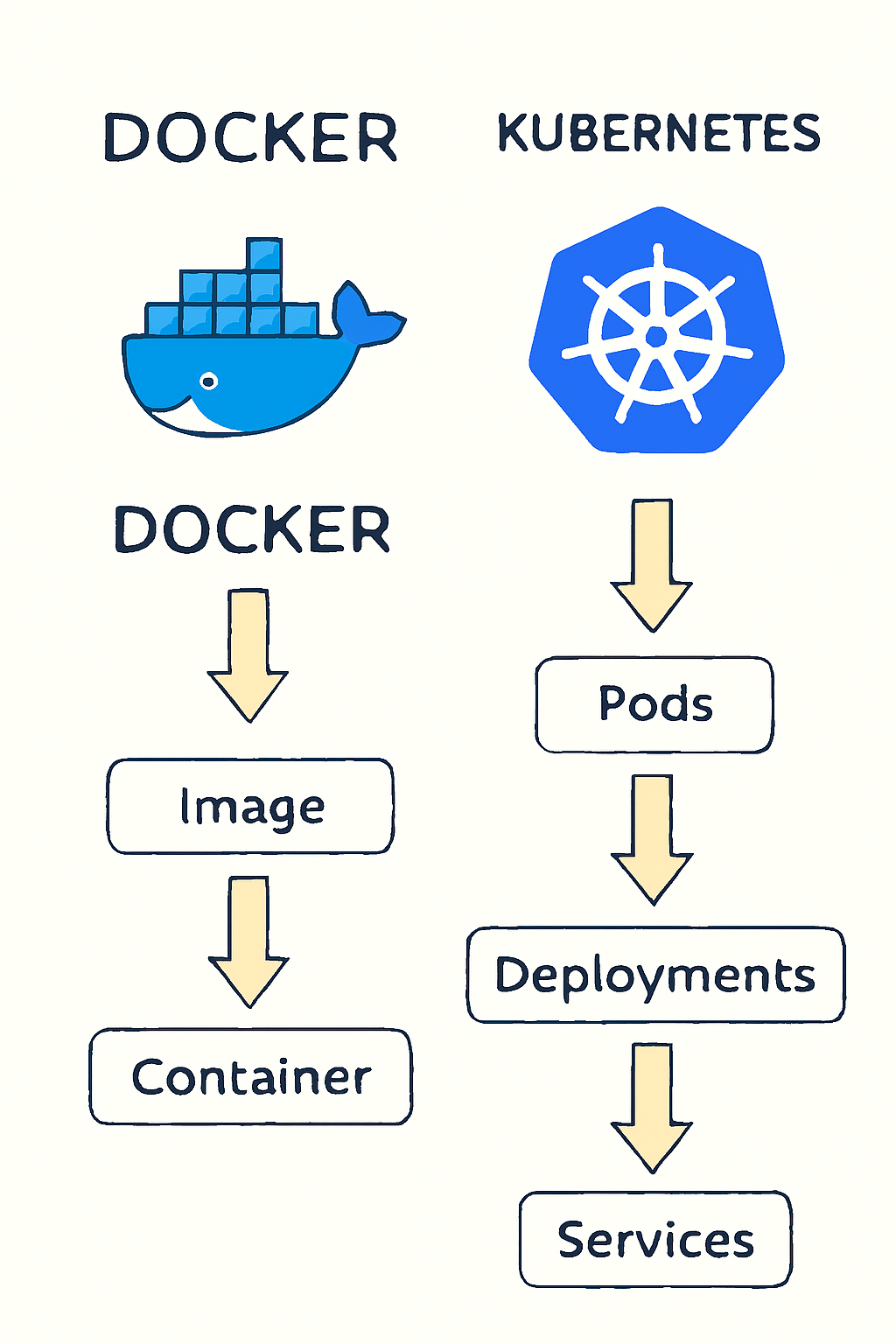Containerization: Docker & Kubernetes
Modern cloud-native systems run on containers. Docker packages your app with all dependencies; Kubernetes orchestrates those containers across machines for scalability, resilience, and automation.
This lesson gives you the fundamentals, a practical example (Java app), and interview-ready insights.

What you’ll learn
- Docker basics: images, containers, Dockerfiles.
- Kubernetes basics: pods, deployments, services, scaling.
- How Docker and Kubernetes fit into distributed systems.
- A Java app example with Dockerfile + Kubernetes YAML.
- Interview-ready tips for FAANG and system design interviews.
1. Why Containers?
- Before: Apps deployed on bare-metal or VMs → heavy, inconsistent.
- Now: Containers = lightweight, portable units → “works everywhere”.
Benefits:
- Portability: same environment across dev, test, prod.
- Isolation: each container has its own runtime.
- Efficiency: share host OS kernel, smaller footprint than VMs.
- Speed: fast start/stop compared to full VM.
2. Docker: Packaging Apps
Definition: Docker turns your app into an image (blueprint), which you can run as containers.
- Image: Template with code + runtime.
- Container: Running instance of an image.
- Dockerfile: Recipe for building an image.
Example use case: Package a Java REST API into an image → run anywhere (local, AWS ECS, Kubernetes).
3. Kubernetes: Orchestrating Containers
Definition: Kubernetes (K8s) automates deployment, scaling, and management of containers.
- Pod: Smallest deployable unit (usually 1 container).
- Deployment: Manages replica sets (scaling, rolling updates).
- Service: Exposes pods inside/outside the cluster.
- Autoscaling: Adjust replicas based on CPU, requests, custom metrics.
Example use case: Run a microservice across 3 replicas, expose it via a LoadBalancer.
4. Containers in Distributed Systems
- Docker: Ensures consistency across microservices.
- Kubernetes: Ensures availability and scalability.
- Together: foundation for modern distributed systems (FAANG, startups, cloud-native apps).
5. Practical Example — Java App
Dockerfile
# Base image: Java 17 slim
FROM openjdk:17-jdk-slim
WORKDIR /app
# Copy built JAR
COPY target/my-app-1.0.jar my-app.jar
EXPOSE 8080
ENTRYPOINT ["java", "-jar", "my-app.jar"]Kubernetes Deployment
apiVersion: apps/v1
kind: Deployment
metadata:
name: my-app
spec:
replicas: 3
selector:
matchLabels:
app: my-app
template:
metadata:
labels:
app: my-app
spec:
containers:
- name: my-app
image: my-app:1.0
ports:
- containerPort: 8080
---
apiVersion: v1
kind: Service
metadata:
name: my-app-service
spec:
selector:
app: my-app
ports:
- port: 80
targetPort: 8080
type: LoadBalancerWorkflow:
- Build JAR (
mvn package). - Build + push image:
docker build -t my-app:1.0 .→docker push my-app:1.0. - Deploy:
kubectl apply -f deployment.yaml.
6. Interview-Ready Insights
- Design pattern: “Stateless API servers + autoscaling + load balancer”.
- Scaling: Kubernetes handles replicas & rollouts.
- Security: Use secrets/config maps; avoid hardcoding credentials.
- Trade-offs: Containers are portable; VMs offer stronger isolation.
Sample FAANG-style response:
“I’d package the service into a Docker image, deploy via Kubernetes with 3 replicas, expose it through a LoadBalancer service, and configure autoscaling — ensuring high availability and scalability.”
7. FAANG-Specific Tips
- Amazon (EKS): Emphasize AWS EKS, IAM roles, cost optimization.
- Google (GKE): Highlight scalability, integration with GCP.
- Meta: Show rapid deployment & low latency focus.
- Netflix: Highlight autonomy in designing resilient systems.
8. Practice Exercise
Task: Containerize a simple REST API and deploy with Kubernetes.
- Write a Dockerfile.
- Deploy with a Kubernetes YAML (2 replicas).
- Craft a STAR response around outcomes (latency ↓, uptime ↑, cost savings).
9. Quick Reference
- Docker Docs: docker.com
- Kubernetes Docs: kubernetes.io
- Kubernetes Up & Running — Kelsey Hightower
- Designing Data-Intensive Applications — Martin Kleppmann
Conclusion
Docker + Kubernetes = the default skillset for modern cloud engineers.
They let you run portable apps (Docker) and scale them globally (Kubernetes).
For interviews: focus on stateless design, scaling patterns, and security.